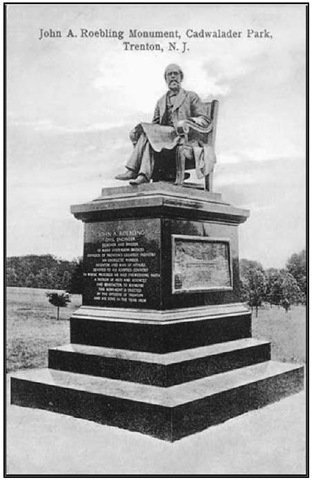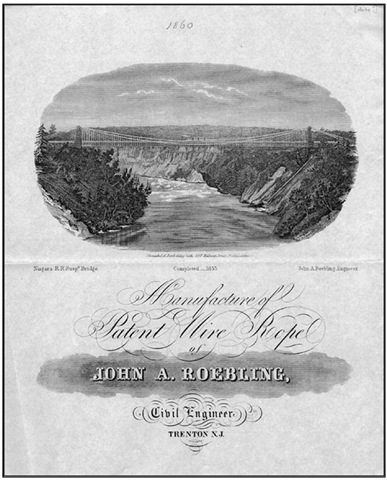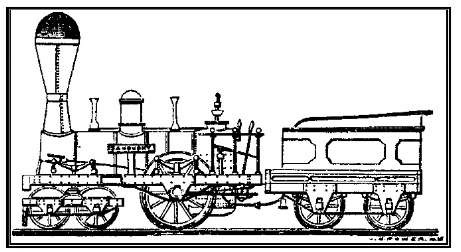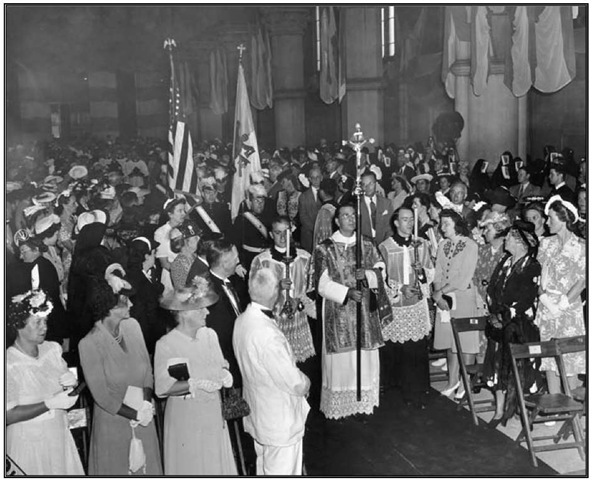Rockaway Township. 45.3-square-mile township in Morris County. Rockaway Township was set off from Pequannock Township in 1844. The iron industry played an important role in the town’s nineteenth-century history, with Split Rock Furnace and numerous iron mines being active. Easily available waterpower led to milling as a major industry, as were distilling and tanning; the terrain limited agricultural uses. In the 1880s, the U.S. Army acquired large tracts here for the munitions development and depot facility, now Picatinny Arsenal, which remains a major employer and a notable army installation.
While the southern portion of the township, along Routes 15 and 80, has seen major commercial development, much of the rest of the township remains as open space, including Split Rock Reservoir and Farny State Park. Green Pond, in the northern part of the township, is an important golf and summer resort. In 2000, the population of 22,930 was 89 percent white and 6 percent Asian. The median household income in 2000 was $80,939. For complete census figures, see chart, 136..
Rockefeller Institute for Medical Research. The Rockefeller Institute for Medical Research was created in 1901, became the Rockefeller University in 1953, and has always had headquarters, hospital, and laboratories in New York City. However, from 1907 to 1951, the Institute had a significant presence in New Jersey, first as a 97.5-acre farm in Clyde (Franklin Township) for maintaining dogs and horses, and then as a distinguished center for biological, human, and veterinary medical research on about eight hundred acres in the region of Penns Neck (West Windsor Township), near Princeton.
The center began in 1914 as the Department of Animal Diseases, and the first of the complex of buildings and facilities were occupied in 1916. In 1931 a botanical division was added and the center was renamed the Department of Animal and Plant Pathology. From its opening to its closure, the directors and staff scientists maintained an outstanding level of productivity and quality of research in bacteriology, parasitology, virology, and other fields, resulting in two Nobel Prizes in chemistry in 1946.
In 1951 the Rockefeller Institute sold the property to Princeton University, under whose control it became the Princeton Forrestal Center. The home of Theobald Smith, the department’s first director, has been retained as the clubhouse for the Princeton Landing residential development.
Rocketry. Significant advances in the field of rocketry occurred in New Jersey. Denville-based Reaction Motors Incorporated (RMI) was the nation’s first company organized to design and manufacture liquid-fuel rocket motors. RMI produced innovative rocket motors for military missiles, research rockets, and experimental aircraft. The Bell X-i that made aviation history in October 1947, when it became the first manned aircraft to pass through the "sound barrier” in level flight, was powered by an RMI-designed rocket motor. In 1958, RMI merged with Trenton-based Thiokol Chemical Corporation, a manufacturer of solid-fuel rocket motors.
Curtiss-Wright Corporation, in Wood-Ridge, developed ramjet and rocket motors, including the rocket motor for the Bell X-2 research aircraft. Supersonic ramjet engines were tested at Island Beach by the U.S. Navy and Johns Hopkins University in 1945, leading to the development of the Talos missile system. The Naval Air Rocket Test Station, located adjacent to the army’s Picatinny Arsenal in Dover, operated rocket test facilities from 1948 through 1960.
Rockingham. Rockingham is believed to be one of the oldest houses in the Millstone River valley, with the earliest section dating back before i7i0. Built by the Higgins family, it was enlarged under the ownership of John Berrien, a justice of the courts in New Jersey who lived at Rockingham until his death in 1772. In 1783, while it was meeting at Nassau Hall in nearby Princeton, the Continental Congress rented the house from Margaret Berrien for use by Gen. and Mrs. George Washington. The Washingtons occupied the house from August 23 to November 10, 1783. It was at Rockingham, in the upstairs study, that Washington penned his "Farewell Orders to the Armies of the United States,” dated November 2, 1783.
Because of quarrying activities in the vicinity, Rockingham has been moved three times in its long history and is now in Kingston. Operated by the Division of Parks and Forestry, the house contains an excellent collection of eighteenth- and early nineteenth-century furnishings.
Rockleigh. 0.97-square-mile borough in Bergen County, located on the western slope of the Palisades, bordering New York State to its north. Originally a region claimed by both New York and New Jersey, Rockleigh became part of this state after the boundary was settled in the i770s. Sneden’s Landing Road (now Rockleigh Road), an active artery since the early 1700s, led to the New York City ferry and was used by troops during the Revolutionary War.
First part of Harrington Township, Rock-leigh was later the East Northvale section of Northvale. In i923, it seceded over a water line dispute and was incorporated as a borough. Today a sparsely populated community with fewer than seventy homes, Rockleigh has no public library, schools, or police force. The ii0-acre Rockleigh Industrial Park, housed in a rural setting, occupies a majority of the land area. The remaining territory is exurban in nature, comprised of single-family residences, undeveloped parkland, a golf course, and a country club. Its historic district of eighteenth-and nineteenth-century homes is the largest in the county. The 2000 population of 39i was 90 percent white. The 2000 median household income was $152,262.
Rocky Hill. 0.64-square-mile borough in Somerset County. Once part of lands belonging to the Unami, a family group of the Lenape, the area was deeded to John Harrison in i7i7 and settled by the Dutch. Rocky Hill takes its name from the stone outcrop-pings on which it is situated. In i783, while attending sessions of the Continental Congress in Princeton, George Washington wrote his Farewell Address to his troops at Rockingham, a state historic site built i734 and since moved to nearby Kingston to avoid an encroaching quarry. Originally part of Montgomery Township, Rocky Hill was formed by referendum December 14,1889. Twentieth-century industries included the Atlantic Terra Cotta Company, manufacturer of architectural ornamentation, Hercules Powder Company (which maintains research facilities in the borough), and Delaware River Quarry Company, which drew hundreds of Italian immigrants to the village. Quarrying operations continue in the vicinity. A suburb of Princeton, the community is predominantly residential. The population in 2000 of 662 was 95 percent white.
Rodino, Peter W., Jr. (b. June 7,1909).U.S. congressman and lawyer. Peter Rodino was born in Newark and educated locally, earning a law degree from the New Jersey School of Law (now the Rutgers University Law School) in 1937. While serving in the army from 1941 to 1946, Rodino rose to the rank of captain and was awarded a Bronze Star among other honors. In 1948, he won election to the U.S. House of Representatives from New Jersey’s 10th District, and continued to serve in Congress for the next forty years.
Rodino’s career in Congress included appointments as assistant majority whip, membership on the House Steering Committee, and chairing the House Judiciary Committee. It was in this last capacity that Rodino rose to national prominence when that committee drafted articles of impeachment against President Richard M. Nixon in 1974. Nixon resigned from office before the House voted on these articles. As a member of the Judiciary Committee, Rodino authored the majority reports that became the basis for various pieces of civil rights legislation passed in the late 1950s and throughout the 1960s and the 1982 Voting Rights Act Extension.
Roebling, John Augustus (b. June12, 1806; d. July 22, 1869). Engineer and manufacturer. Born in Thuringia, Germany, John A. Roebling graduated from the Royal Polytechnic Institute in Berlin, where he studied engineering, bridge construction, and philosophy. After graduation he built roads in Germany for three years, and then immigrated to the United States in 1831 with his brother Karl to form an agrarian community in Pennsylvania called Saxonburg. The experiment failed, but in 1837 Roebling became an American citizen and began working on canal projects in Pennsylvania. In 1841 he established a factory for wire rope, designed to replace the hemp rope cables used on canal boats, which would later find use in his suspension bridges. That year he also published a paper on cable and chain bridges identifying the problems in suspension bridges to date. His suspension aqueducts earned him a national reputation; one still stands at Lack waxen, Pennsylvania, over the Delaware River. His first wire suspension bridge was built in 1846-1847 across the Monongahela River in Pittsburgh. In 1848 he located his wire rope factory in Trenton. From 1851 through 1855 he supervised construction of the 810-foot Niagara Gorge railroad suspension bridge. His most famous project, however, was the Brooklyn Bridge, designed with his son, Washington. As a result of an accident while he was on a survey pontoon attempting to fix a tower location for the bridge, his foot was crushed and subsequently amputated. He died of tetanus a few weeks later.
Monument dedicated to John A. Roebling in Cadwalader Park, Trenton.
Roebling, Washington Augustus (b. May 26, 1837; d. July 21, 1926). Engineer, soldier, and manufacturer. Born in Saxonburg, Pennsylvania, the agrarian community founded by his father John Augustus Roebling, Washington Roebling graduated from Rensselaer Polytechnic Institute in New York in 1857 and began work in the Roebling wire rope factory. He volunteered for service in the Civil War on the Union side, rising to lieutenant colonel. Although he saw action he was primarily involved in bridge-building, particularly across the Rappahannock and Shenandoah rivers, as well as aerial observation from balloons. In 1865 he resigned his commission to return to bridge-building and, in particular, to assist on the Cincinnati and Covington Bridge across the Ohio River. Following John A. Roebling’s death, he became chief engineer on the Brooklyn Bridge. During the course of his work on that project he became seriously ill from the caisson disease, or the "bends,” and directed the conclusion of the work from his Brooklyn home through his wife, Emily, whom he had met at an officers’ ball during the war. She became in essence the assistant to the chief engineer. Roebling became president of John A. Roebling’s Sons Company in 1876. Settling in Trenton in the late 1880s, he also became known for his collection of rare minerals.
Roebling. Roebling is a planned industrial village, now a part of Florence Township, designed and built in 1905 by the Roebling family, noted Trenton industrialists. The village is located on the Delaware River, about ten miles south of Trenton. The Roeblings purchased a 150-acre farm, with more than one mile of river frontage, in the small village of Kinkora, Burlington County. Over time, the site was expanded by an additional fifty acres reclaimed from the river. A new state-of-the-art steel mill was built first. The town was subsequently developed to attract and retain a permanent labor force for the mills. The plan for this company town established a modified grid of pleasant, human-scale blocks, served by rear alleys. Main Street terminates symbolically at the front gate to the Kinkora steelworks. The plan created a complete community, with some 750 units of varied housing types, a post office, drugstore, grocery store, bakery, barbershop, firehouse, hospital, jail, bank, school, inn with a bar, recreation center, athletic fields, 900-seat assembly hall with a free public library, and a large park along the river.
The Roeblings sold the steel mill to Colorado Fuel and Iron in 1952. CFI continued to run the mill until 1974 when it ceased operations. In 1983, the mill was declared a federal Superfund site. Currently, Florence Township is working to redevelop the area.
Today, Roebling is a residential neighborhood of more than 8,500 residents.
Rogers had worked in a Broadway cigar store, a somewhat unsavory occupation for an unmarried female in that era. The truth of the matter seems to be that she died in a botched abortion at a seedy Weehawken inn, after which her corpse was tossed into the river.
The case is remembered as one of the first examples of the sensationalist, mass market journalism of the penny press. It also occupies a place in literary history. One of those attracted to the newspaper accounts of the "Beautiful Cigar Girl” was the author Edgar Allan Poe, who wrote a fictionalized short story closely based on the case, entitled "The Mystery of Marie Roget.” The story is considered one of the classics of early detective fiction.
Rogers Locomotive and Machine Works. The most successful and well known of several locomotive works, the Rogers Works made Paterson the leading producer of railroad locomotives by the time of the Civil War. Thomas Rogers, a machinist with experience building power looms, established the firm, whose first locomotive was the Sandusky, built in 1837. The Rogers Works was responsible for much of the early American innovation in locomotive design, but the firm lost ground to larger producers in the 1870s, and was eventually sold in the early twentieth century to the American Locomotive Company, which had monopolized much of the market. Paterson firms built almost ten thousand locomotives before the last factory closed down in the 1920s.
Ad for John A. Roebling, civil engineer, with the Niagara Gorge railroad suspension bridge, which used his patent wire rope, in the background, 1860.
Rogers, Charles H. (b. 1888; d. Feb.27, 1977). Ornithologist. Born in Philadelphia, Charles H. Rogers, New Jersey’s leading ornithologist for most of the twentieth century, graduated from Princeton University in 1909, then spent a year on Wall Street before joining the American Museum of Natural History. In 1920 Rogers returned to Princeton University to teach biology and ornithology and became curator of the university’s bird collection, which he enlarged to become one of the finest small collections in the country. An outstanding field ornithologist, he participated in every National Audubon Society Christmas Bird Count from its inception in 1900 until his death in 1977 (with the exception of
Rogers, Mary Cecilia (b. 1820; d. July 25, 1841). Murder victim. On July 28, 1841, the dead body of Mary Rogers, about twenty-one years old, was found floating in shallow water on the New Jersey side of the Hudson River. The young woman had been missing from her mother’s boardinghouse in Manhattan for several days. It was evident from the battered condition of the corpse that she had been murdered, presumably in the Hoboken/ Weehawken area.
The case became headline news, and for weeks there was speculation in the press about who could have slain the attractive young woman, along with pages of interviews with those involved in the case and accounts of her beautiful face and figure.
The locomotive Sandusky was introduced by Thomas Rogers in 1837. The engine’s innovative driving wheels became standard equipment on most American locomotives.
Roman Catholic Church. By the late seventeenth century a few isolated Catholics lived in the area that became New Jersey. Despite legal disabilities, de facto toleration allowed a slow growth throughout the eighteenth century. Much of this occurred at two centers: one along Alloways Creek in Salem County, where a glassworks established in 1740 supported a nucleus of German and Irish skilled craftsmen who in 1743 began to be visited regularly by Reverend Theodore Schneider, S.J., from Philadelphia; and the other at the northern end of the state, where ironworks in the vicinity of Macopin, Mount Hope, and Greenwood Lake employed Irish workers who were visited regularly by Reverend Ferdinand Farmer, S.J., also from Philadelphia. Farmer continued his mission through the American Revolution until his death in 1786.
Post-Revolutionary New Jersey incorporated into its constitution the colonial proviso that Catholics, who by 1800 numbered about one thousand, could not hold public office. They were intermittently visited by priests from New York or Philadelphia. This haphazard pastoral arrangement was formalized in 1808, when each city became the see of a new diocese, and New Jersey was divided between them. This restructuring occurred just in time to face the challenges posed by an influx of Catholics. Refugees from the French Revolution formed a small early cluster, soon joined by refugees from the West Indies. A more notable growth of Catholicism began with the post-1820 influx of Irish and German immigrants who helped swell the state’s population to 549,000 in 1850. In 1824 Saint John’s in Trenton became the first Catholic church in the state. In 1844 a new state constitution allowed Catholics to hold public office and ended official discrimination. In 1853 the Holy See recognized the growth of the Catholic community in New Jersey by establishing a new diocese at Newark to include all Catholics in the state, and named Reverend James Roosevelt Bayley its first bishop. Bayley recruited priests in Europe, received religious communities of men into the diocese, and established Seton Hall College in 1856 to prepare local young men for theological study and ordination to the priesthood. Realizing that his flock needed education, he strongly encouraged pastors and the laity to establish parochial schools and supported the foundation of the Sisters of Charity of Saint Elizabeth to recruit and train the teachers. Not only educational facilities, but religious, welfare, fraternal, and social organizations had to be established. The Little Sisters of the Poor of Saint Francis began Saint Mary’s Hospital in Hoboken in 1863, and opened Saint Francis’s in Jersey City and Saint Michael’s in Newark by 1867. Immigration continued to expand the Catholic population, but post-Civil War immigration came increasingly from southern and eastern Europe. Large new ethnic groups needed the Church’s services—Italians, Slovaks, Poles of the Roman rite, and also Byzantine Catholics and Ukrainian Catholics of the Eastern rite. Bayley was appointed archbishop of Baltimore in 1872. The diocese of Newark had grown during his tenure to 113 churches, with 79 diocesan priests, assisted in parochial work by members of 5 religious communities of men. The largest of the religious communities of women, the Sisters of Charity, numbered 170. An extensive network of educational and social service institutions flourished. Massive immigration continued and grew more diverse.
The Twenty-fifth Anniversary of Bishop Thomas Walsh’s being raised to the hierarchy, Cathedral Basilica of the Sacred Heart, Newark, July 29,1943.
Michael Augustine Corrigan, a native of Newark and a member of the first class at the North American College in Rome, succeeded Bayley. He had served as professor in both Seton Hall College and Immaculate Conception Seminary and as vicar general of the diocese. Corrigan maintained Bayley’s policies, furthered the development of Catholic schools, and fought several manifestations of a lingering anti-Catholic animus in United States society. As the Catholic population continued to expand, more parishes were established, new social services institutions began, and new religious communities entered the diocese. By 1880, diocesan priests numbered 130, a network of parochial and prep schools served about thirty thousand students, over 700 religious sisters served in schools and hospitals. In 1880 Corrigan was appointed coadjutor to Cardinal John C. McCloskey, archbishop of New York. Before Corrigan’s successor was named, Rome divided the diocese in two, retaining the seven northern counties of the state in the diocese of Newark and establishing the diocese of Trenton, which contained the fourteen remaining counties. Reverend Winand M. Wigger, a native of New York City and a priest of the diocese of Newark, succeeded to that diocese, and Irish-born Reverend Michael J. O’Farrell, a priest of the diocese of New York, became the first bishop of Trenton. Although there were now two dioceses, their challenges remained essentially the same: to provide ministry to a Catholic population of very varied ethnic background and paraliturgical customs, to preserve their unity of faith, and to enhance their knowledge of the faith. The years up to World War I saw numerous squabbles occasioned partly by ethnic tensions and partly by the lack of resources to satisfy every group’s need. Although some priests of each immigrant group came to this country, usually not enough were available to meet all demands. Each diocese faced such problems, as well as conflicts between ethnic groups and, beginning around 1870, between members of different rites, between clergy and bishop, and between clergy and laity. Catholics settled most of these problems reasonably amicably during the last third of the nineteenth century, and greatly expanded their educational efforts and their social welfare institutions. High levels of Catholic immigration continued until the outbreak of World War I.
By then a vigorous Catholic community showed stability, variety, and fidelity to the faith. Catholics served in the armed forces and in the auxiliary services that sought to provide some amenities to the troops. Immigration slowed somewhat after World War I, but Catholics continued to increase in number and to expand their institutions. Rome recognized the development in 1937, in making Newark an archdiocese and establishing the new dioceses of Paterson and Camden by reducing the size of the dioceses of Newark and Trenton. Newark’s bishop, Thomas J. Walsh, became the first archbishop. By the time of the attack on Pearl Harbor, New Jersey’s Catholics constituted a predominantly urban, working-class community, active in all aspects of the state’s life. The aftermath of World War II changed the community into a suburban one and opened middle-class life to the Catholic community. Churches, schools, and other facilities had now to be built where the people were. Simultaneously, Vatican Council II (1962-1965) undertook a series of liturgical and other reforms that upset many Catholics.
In 1963 the establishment of the Eparchy of Passaic provided diocesan organization for the numerous Ruthenian Byzantine Catholics on the East Coast, and in 1981 the diocese of Metuchen was established to accommodate the suburbanization of the Catholic population. Immigration continued to be a major factor in growth—from Latin America in extremely large numbers and increasingly from Asia and elsewhere. The diocese of Our Lady of Deliverance for Syriac Catholics in the United States and Canada has Newark as its see city. By the year 2002 the Catholic community of New Jersey, estimated to be about 3.5 million, appeared to have absorbed the numerous changes and to have adapted well.




